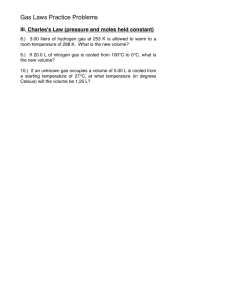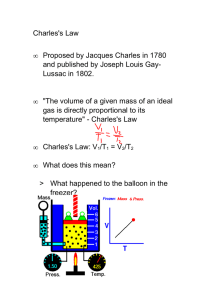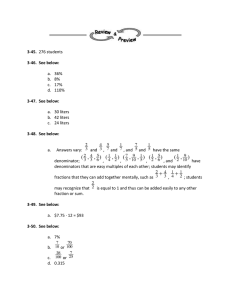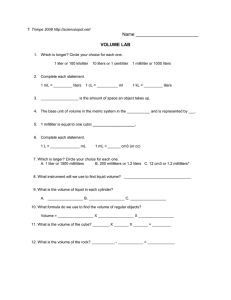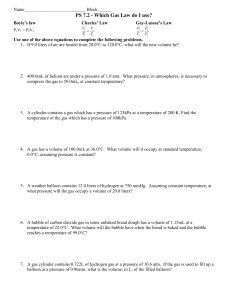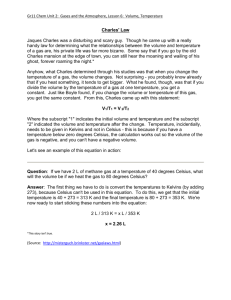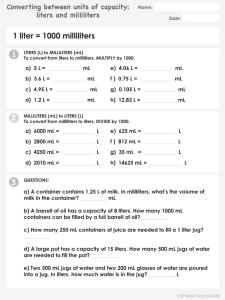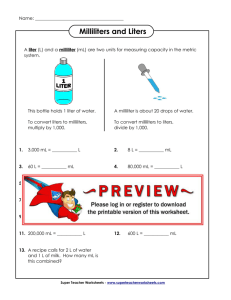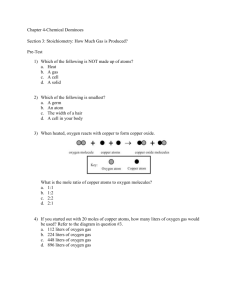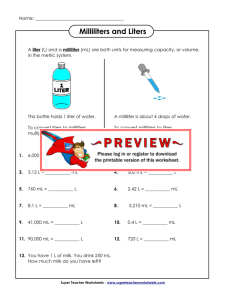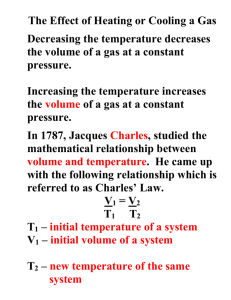Charles's Law Practice Problems - Chemistry Worksheet
advertisement
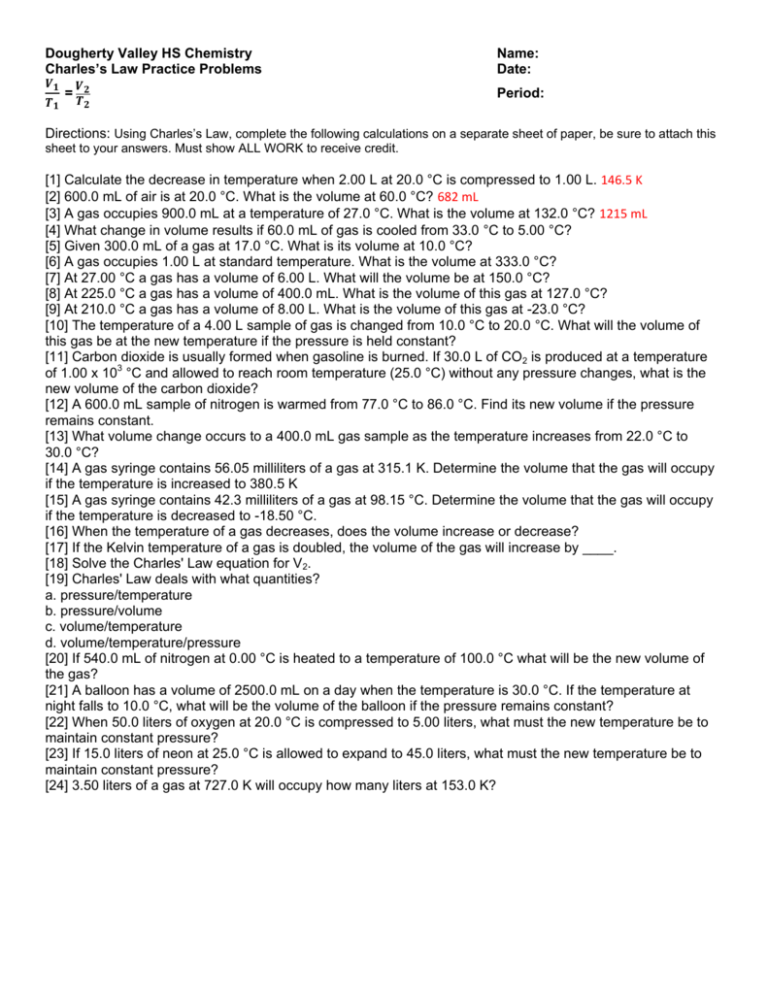
Dougherty Valley HS Chemistry Charles’s Law Practice Problems 𝑽𝟏 𝑻𝟏 = 𝑽𝟐 𝑻𝟐 Name: Date: Period: Directions: Using Charles’s Law, complete the following calculations on a separate sheet of paper, be sure to attach this sheet to your answers. Must show ALL WORK to receive credit. [1] Calculate the decrease in temperature when 2.00 L at 20.0 °C is compressed to 1.00 L. 146.5 K [2] 600.0 mL of air is at 20.0 °C. What is the volume at 60.0 °C? 682 mL [3] A gas occupies 900.0 mL at a temperature of 27.0 °C. What is the volume at 132.0 °C? 1215 mL [4] What change in volume results if 60.0 mL of gas is cooled from 33.0 °C to 5.00 °C? [5] Given 300.0 mL of a gas at 17.0 °C. What is its volume at 10.0 °C? [6] A gas occupies 1.00 L at standard temperature. What is the volume at 333.0 °C? [7] At 27.00 °C a gas has a volume of 6.00 L. What will the volume be at 150.0 °C? [8] At 225.0 °C a gas has a volume of 400.0 mL. What is the volume of this gas at 127.0 °C? [9] At 210.0 °C a gas has a volume of 8.00 L. What is the volume of this gas at -23.0 °C? [10] The temperature of a 4.00 L sample of gas is changed from 10.0 °C to 20.0 °C. What will the volume of this gas be at the new temperature if the pressure is held constant? [11] Carbon dioxide is usually formed when gasoline is burned. If 30.0 L of CO2 is produced at a temperature of 1.00 x 103 °C and allowed to reach room temperature (25.0 °C) without any pressure changes, what is the new volume of the carbon dioxide? [12] A 600.0 mL sample of nitrogen is warmed from 77.0 °C to 86.0 °C. Find its new volume if the pressure remains constant. [13] What volume change occurs to a 400.0 mL gas sample as the temperature increases from 22.0 °C to 30.0 °C? [14] A gas syringe contains 56.05 milliliters of a gas at 315.1 K. Determine the volume that the gas will occupy if the temperature is increased to 380.5 K [15] A gas syringe contains 42.3 milliliters of a gas at 98.15 °C. Determine the volume that the gas will occupy if the temperature is decreased to -18.50 °C. [16] When the temperature of a gas decreases, does the volume increase or decrease? [17] If the Kelvin temperature of a gas is doubled, the volume of the gas will increase by ____. [18] Solve the Charles' Law equation for V2. [19] Charles' Law deals with what quantities? a. pressure/temperature b. pressure/volume c. volume/temperature d. volume/temperature/pressure [20] If 540.0 mL of nitrogen at 0.00 °C is heated to a temperature of 100.0 °C what will be the new volume of the gas? [21] A balloon has a volume of 2500.0 mL on a day when the temperature is 30.0 °C. If the temperature at night falls to 10.0 °C, what will be the volume of the balloon if the pressure remains constant? [22] When 50.0 liters of oxygen at 20.0 °C is compressed to 5.00 liters, what must the new temperature be to maintain constant pressure? [23] If 15.0 liters of neon at 25.0 °C is allowed to expand to 45.0 liters, what must the new temperature be to maintain constant pressure? [24] 3.50 liters of a gas at 727.0 K will occupy how many liters at 153.0 K?
